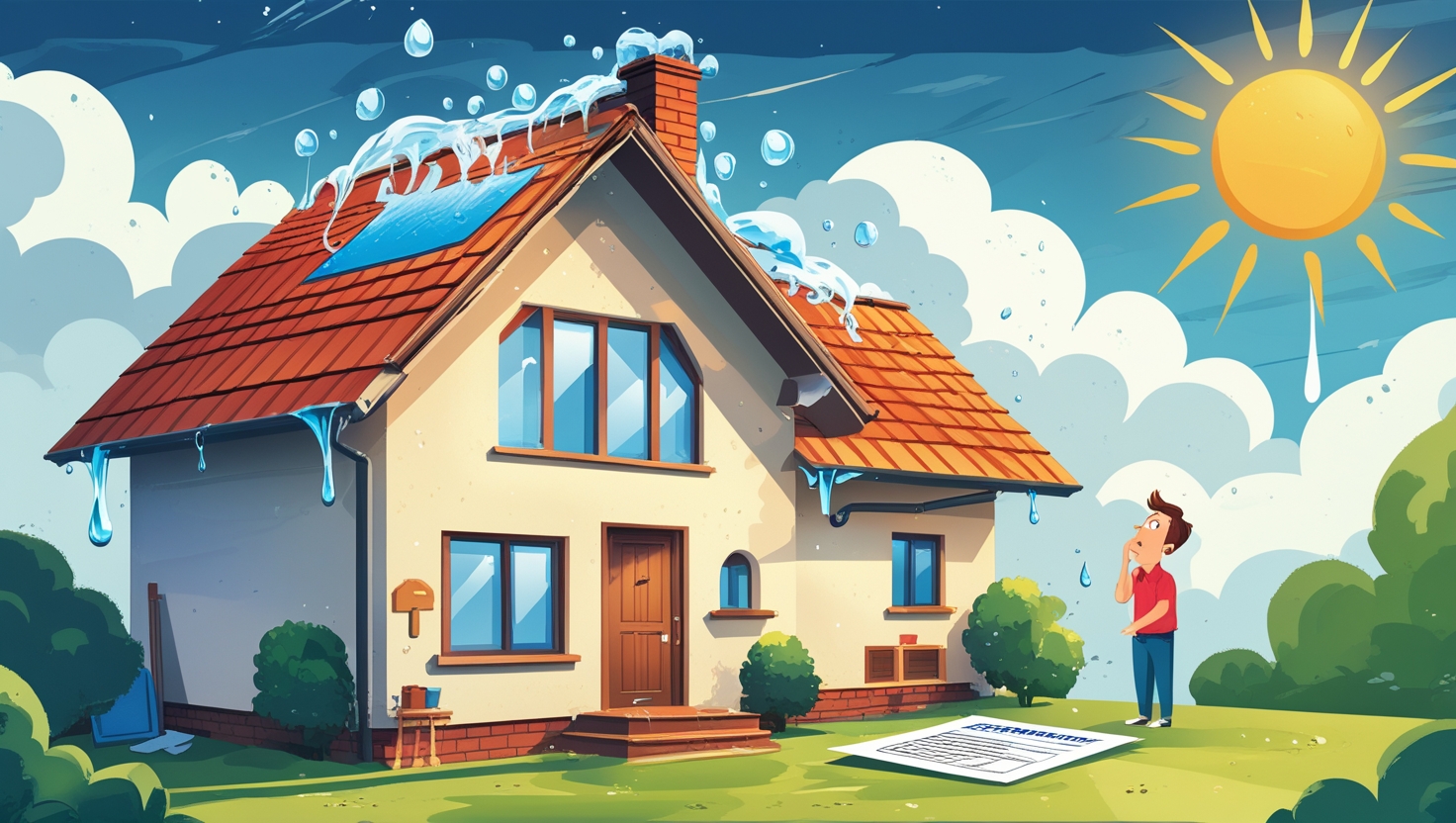Understanding the Landscape of Second Homes in the UK
Exploring the Rise of Second Home Ownership
In recent years, the UK has witnessed a growing trend in second home ownership. It’s not just about having a place to escape to during holidays anymore; it’s about owning that cozy cottage in the countryside or a sleek apartment by the sea. With remote work becoming the norm, more people are willing to invest in a second home, blending leisure with work. The scenery may change, but the to-do lists are just as long!
Why Brits Are Buying a Second Home: A Cultural Perspective
The love affair with second homes isn’t solely an economic endeavor. It’s woven into the very fabric of British culture. From escape routes to the Lake District to holiday retreats in Cornwall, second homes provide a sanctuary where families can create lasting memories together—without the pesky neighbors yelling about the noise!
A Quick Tour of Popular Locations for Second Homes
Across the UK, certain locations have become particularly popular for second homes. Think of the charming seaside towns of Devon and Cornwall, or the rugged beauty of Scotland’s Highlands. Each area offers unique lifestyle benefits that entice homeowners to invest. Whether it’s breathtaking views or picturesque cafes, these locations offer much more than just bricks and mortar.
The Importance of Home Insurance
Protecting Your Investment: Why Insurance Matters
Owning a second home is a delightful endeavor, but it comes with its fair share of responsibilities. Home insurance is crucial for safeguarding your investment from loss, theft, and natural disasters. Just as you wouldn’t hit the slopes without a helmet, don’t enter the world of second homes unprepared!
What Home Insurance Covers: The Essentials
Typically, home insurance covers the structure of the home, personal belongings, liability protection, and living expenses if you need to temporarily relocate due to damage. Keep in mind that coverage can vary depending on the policy and provider, so reading the fine print is more than just a suggestion—it’s essential.
Common Misconceptions About Home Insurance
Despite the number of homeowners aware of insurance, misconceptions abound. Many believe insurance is a one-size-fits-all product that covers every scenario. Spoiler alert: it doesn’t! It’s crucial to understand precisely what your policy covers, leaving no room for confusion when the unexpected occurs.
Types of Home Insurance for Second Homes
Standard Policies vs. Specialist Insurance: What’s the Difference?
When insuring a second home, you may encounter standard home insurance policies and specialist providers tailored for secondary residences. Standard policies can often work, but specialist insurance may cover unique risks associated with occasional use or vacation rentals.
Short-Term Rentals vs. Long-Term Occupancy: Coverage Variances
If you rent out your second home, make sure your policy covers short-term rentals. Many homeowners unknowingly breach their policy terms by allowing guests to stay without proper coverage. Communication is key here—stay transparent with your insurer about how you plan to use your home!
Holiday Home Insurance: What You Need to Know
Holiday home insurance is specifically designed for properties that are used occasionally, typically during holidays and vacations. This type of insurance usually provides tailored coverage options that reflect the unique risks associated with shorter stays, ensuring peace of mind when you’re away.
Factors Affecting Home Insurance Costs
Location, Location, Location: How Area Impacts Premiums
As with property value, location plays a vital role in determining insurance costs. Living in a bustling metropolis might expose you to higher theft rates, while a tranquil village could leave you celebrating lower premiums. Geographical factors can significantly affect not just your home’s value but also your insurance rates.
The Age of the Property: Old Charm vs. Modern Safety
Old homes can bring charm and character, but they also often come with increased insurance premiums due to outdated features and higher likelihood of maintenance issues. It’s like an old car—vintage is lovely until it leaves you stranded on the roadside!
Security Features That Can Save You Money on Premiums
Investing in security features like smart locks, camera systems, and alarm systems demonstrates to insurers that you’re serious about protecting your home, often leading to lower premiums. Basically, make your second home as cozy as a castle, and your insurance rates may just thank you!
Understanding Policy Exclusions
Hidden Hazards: What’s Not Covered?
Each insurance policy comes with its set of exclusions, and these can vary greatly. Common exclusions include wear and tear, pest infestations, damage from flooding in certain areas, and even some types of act of God. You may want to invest in a magnifying glass to scan the small print!
The Fine Print: Navigating Policy Exclusions
Navigating the labyrinth of fine print can be tiresome and confusing. If you’re unsure of what’s covered—or excluded—don’t hesitate to ask your insurer directly. It’s better to clarify now than be left out in the rain later!
Avoiding Pitfalls: Tips for Homeowners
Before signing on the dotted line, educate yourself about potential pitfalls. Request a full list of exclusions, understand natural disaster coverage in your region, and consider specialized coverage if your second home is in a high-risk area. After all, forewarned is forearmed!
Claiming Insurance on Your Second Home
The Claims Process: Step-by-Step Guide
Claiming insurance might feel like navigating a maze in the dark, but fear not! First, document the damage with photos and notes—your future self will thank you. Next, contact your insurer to report the claim. Be prepared to provide details and any evidence you’ve gathered. Think of this step as presenting your case in front of a judge—clear, concise, and convincing!
Common Mistakes When Filing a Claim
Many homeowners make the mistake of not reporting damages promptly. Insurance policies often have specific timelines for claims. Failing to act quickly can have you singing the blues when it comes time to receive compensation. Additionally, avoid providing inaccurate or incomplete information. When in doubt, double-check your details!
What to Do When Your Claim is Denied
If your claim is denied, don’t lose hope! Start by asking for clarification—the claims department may have overlooked something. You can appeal the denial with additional documentation or request a review. Sometimes, perseverance pays off, and you may find the resolution you sought is just a conversation away.
Tailoring Your Coverage
Optional Extras: Do You Need Them?
While basic home insurance can cover major damages, optional extras allow you to customize your policy according to your needs. Consider adding coverage for high-value items, such as designer furniture or antiques. These add-ons can save you a headache (and expense) later if something goes awry.
Personal Items Coverage: Not Just for Your Primary Residence
Many homeowners assume their personal belongings in a second home aren’t completely covered under a standard policy. Surprise! They often are, but the coverage may differ. It’s wise to check whether you need additional protection for valuable items, especially if you’re storing a treasure trove of family heirlooms!
Understanding Liability Coverage for Guests
If you plan to invite friends or family, understanding your liability coverage is crucial. This protects you from potential lawsuits stemming from injuries that occur on your property. Remember, a “we’ll be fine” mentality won’t protect your wallet, so ensure you have adequate coverage for those moments when the unexpected happens!
Home Insurance for Letting
Considerations for Landlords: Protecting Your Investment
If you rent out your second home, acquiring the right insurance becomes paramount. Landlord insurance provides coverage tailored to rental properties, addressing unique risks associated with letting. Think of it as a safety net, shielding you from financial falls if something goes wrong!
Understanding Tenants’ vs. Landlord’s Insurance
It’s essential to distinguish between your coverage and that of your tenants. Your policy covers the building, while tenants should have their own renter’s insurance for personal belongings. Make it a point to inform your tenants about this—it’s better to discuss these topics now than later when miscommunication leads to confusion!
Tips for Creating a Solid Rental Agreement
A solid rental agreement can save you countless headaches down the road. Outline expectations, responsibilities, and important details like maintenance, payment schedules, and what happens if things go awry. Remember, it’s not just a document; it’s your peace of mind sealed with ink!
The Future of Home Insurance
Trends Shaping Home Insurance for Second Homes
As technology evolves, so does the insurance landscape. Expect to see trends such as pay-per-use policies, which allow you to tailor your coverage based on how often you use your second home. This could mean saving money during periods of inactivity—imagine getting rewards for your vacation time!
The Role of Technology in Insurance Assessments
Digital tools are transforming how insurance assessments are conducted. Drones can now inspect extensive properties more efficiently, providing greater accuracy and saving time for both insurers and homeowners. Just picture the scene: your home being evaluated by a drone while you sip coffee in your pajamas!
Predictions for the Next Decade in Home Insurance
Experts suggest that the future of home insurance will feature increased customization and flexibility. Innovative policies that respond dynamically to changing risks will become the norm. As we move forward, anticipate insurance products that evolve with your lifestyle and needs—insurance tailored just for you, as it should be!
Common Questions About Second Home Insurance
Is It More Expensive to Insure a Second Home?
Unfortunately, the answer is usually yes. Since second homes are often vacant for significant periods and may be in vacation hotspot areas, rates can be higher. However, mitigating property risks and having security features installed can help lower costs. Think of it as investing in your future peace of mind!
How Can I Lower My Home Insurance Costs?
There are several strategies to keep costs down. Increase your deductible, bundle policies, install security systems, and maintain a good credit score. Each of these actions can make your insurer smile and your wallet a little heavier—sounds like a win-win!
What Should I Do if I Can’t Find Coverage?
If you’re struggling to find suitable coverage, consider working with an insurance broker. A broker can help you navigate different options and find a policy that matches your needs. Don’t settle for frustration; let a professional lighten the load and guide you through the options.
Wrapping Up: Making Informed Decisions
Keeping Your Second Home and Finances Protected
Navigating the world of home insurance may seem daunting, but understanding your options allows you to make informed decisions. Your second home is more than just property; it’s a space for relaxation, joy, and memories. Investing in the right insurance is vital to protecting that investment.



